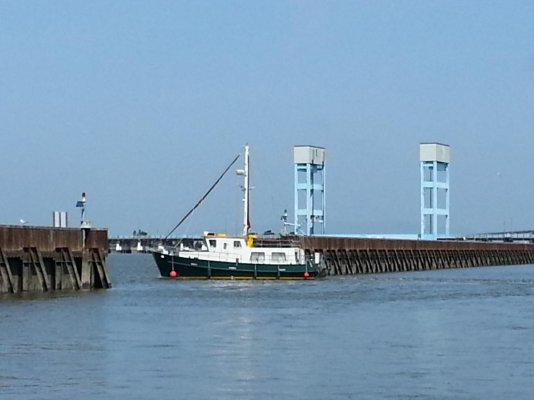Repetitively go through NYC. AIS gives you intercept information and alarms you to vessels which maybe troublesome. Both in front and behind. Although we both visually scan and the brides job is to constantly doing that AIS is a excellent aid to navigation. Clear day or not. Totally disagree it’s only helpful when visibility is limited.
Places where density and speed of traffic is high enough neither vision nor radar are as quick as AIS to sort things out. This is especially true when there’s only one up on watch. Also think knowing the names of surrounding vessels aids VHF communication.
Believe MarineTraffic is useless for this function. Too much delay.
Only using your thoughts as a springboard ref AIS...
I'd guess less than 1% of recreational boats around here on the Chesapeake transmit AIS. I think there are 250-ish boats in our marina, and approx 12 of those transmit. (And I'd also bet that what I'm seeing now is a tenfold increase over what it was like 5 years ago around here.)
So yep, good* when someone nearby is transmitting, but that to me doesn't really tell much about the whole picture around us.
And the good* (asterisk) comes with some "except..." info too. I once watched a smaller planing boat, maybe 26-28' or so, cross our bow... well out in front, no danger at all... and he had an AIS so I was also able to "watch" him on the MFD too. First transmission before crossing our intended path was about 15° to our port. The very next transmission, he was about a half mile or more to our starboard. (Yep, no way Marine Traffic would have been useful.)
In that instance, the AIS signal was WAY out of sync with what we saw with our Mark I* eyeballs. It became apparent to me that transmission timing can be a big deal... and that AIS, while another very useful tool in the box, isn't always any better than radar, watch standers, etc.
We routinely see "vessels" around here, both radar and AIS on the same MFD, and they're always not in the same place. Radar return moves, AIS signal catches up. Another example of transmission time lag. In these cases, so far I think not a big deal -- although so far scales have been such that we haven't been close to the actual vessels anyway.
I do like AIS. I just wouldn't want folks to think it's magic.
-Chris

